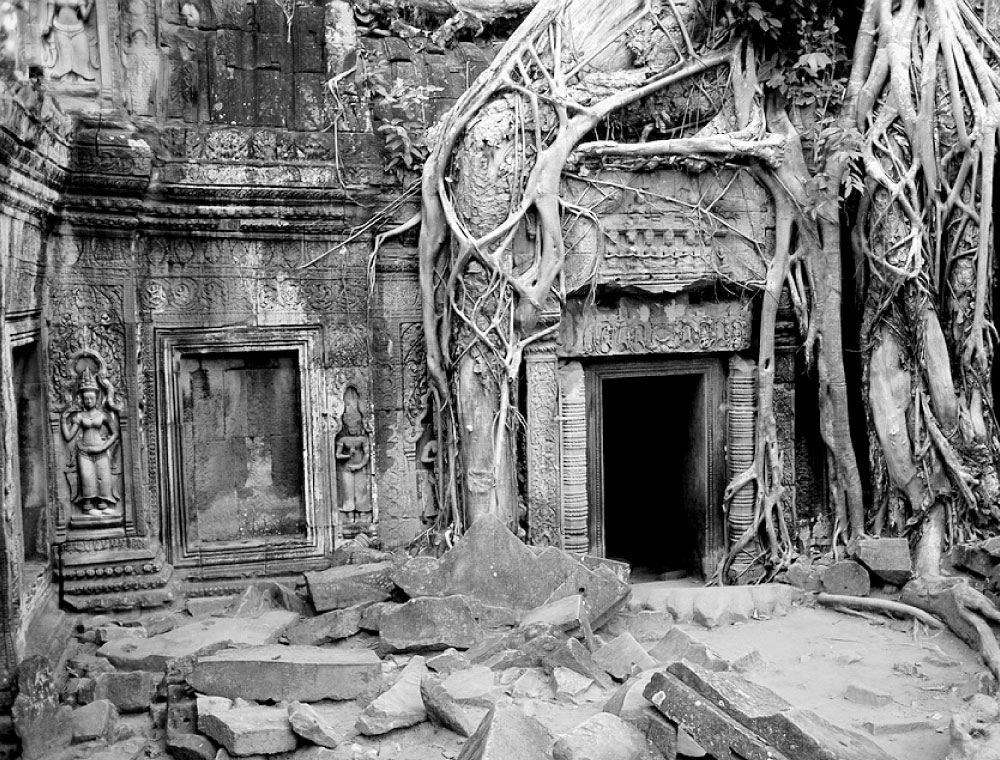PHNOM SANTUK (SANTUK MOUNTAIN)
Phnom Santok is a cultural and natural site located in Ko Koh Village, Ko Koh Commune, Santuk District, about 17 kilometres south of Kampong Thom Provincial Town. The site includes four mountains: Phnom Srah Kmao or Phnom Tbeng; Phnom Penhum or Phnom Kraper; Phnom Champa; and Phnom Santuk. The ancient heritages on the top of the mountain include: many Buddha statues carved from great mountain rocks; Prasat Touch of pyramid-shape made of sandstone; Preah Bat Chann Tuk statue carved on the stone with a footprint of a sacred human (or God); and many other small sculptures. By the stories, the construction and the statues were erected during the reign of Preah Ponhea Dharma Reacha (1474-1494) and have been maintained until now.
SAMBO PREY KUK
Preykuk is a cultural and historical site located in Sambo Village, Sambo Commune, Prasat Sambo District, about 25 kilometres northeast of Kampong Thom Provincial Town. The site was once an old capital named Isanapura and a religious centre for the worship of Shiva Brahmanism. Many temples were built in Sambo Preykuk during the reign of King Isanavarman I (616- 635 A.D.) in the 7th century. The temples of Sambo Preykuk were constructed of solid brick, laterite and sandstone, and decorated by bas-reliefs. The lintel, pillars and the door frames were all made of sandstone. So far, 140 temples have been discovered in the forest. Sambo Preykuk temples are divided into four main groups: The Central Temples, The Northern Temples, The Southern Temples, and Kraol Romeas Temples.
PRASAT ANDET TEMPLE
Prasat Andet is located about 27 kilometres northwest of the Provincial Town of Kampong Thom, in Prasat Village, Sankor Commune, Kampong Svay District, Kampong Thom Province. The temple was built in the second half of 7th century (627-707 A.D.) during the reign of King Jayavarman I as a dedication to God Hirihara, in Kampong Preah style and made of brick with masonry, laterite and sandstone. Prasat Andet was an isolated plan, built on a 5.3-metre in height on an artificial hill facing the east, and was formed in rectangular shape with 7.5-metre in length, 5.5-metre in width and 1-metre in thickness (interior to exterior). The lintel of Prasat Andet was carved in the garlands and carefully done in the traditional Khmer style.
WAT PRASAT
Located in Prasat Village, Prasat Commune, Santuk District, Kampong Thom Province, Wat Prasat Temple was built of brick, masonry and sandstone in the 8th century (706 A.D.) according to Kampong Preah style as a dedication to Siva. It was a temple sanctuary facing the east and built on a flat terrace without a false door.
PRASAT KUHAK NOKOR
Prasat Kuhak Nokor is located in Trodork Poung Village, Pong Ror Commune, Baray District, Kampong Thom Province and is in the complex of Wat Kuhak Nokor (Buddhist Pagoda). The temple sanctuaries facing the east were built on a flat ground, and on a square terrace made of laterite and sandstone with the rampart surrounding. This rampart is 35m in length (East to West) and is 25m in width (North to South). Prasat Kuhak Nokor was built in the 10th to 11th century by King Suryavarman I (1002-1050).
KHMER VILLAGE HOME-STAY
Ideally situated between the Capital of Phnom Penh and the popular tourist destination of Siem Reap, Khmer Village Homestay offers a great opportunity to experience a taste of “real” Cambodia. Visitors may travel by ox-cart to visit local beautiful spots and village homes, and relax at stunning purpose-built venues constructed using raw materials that reflect the beauty of the surrounding areas.
